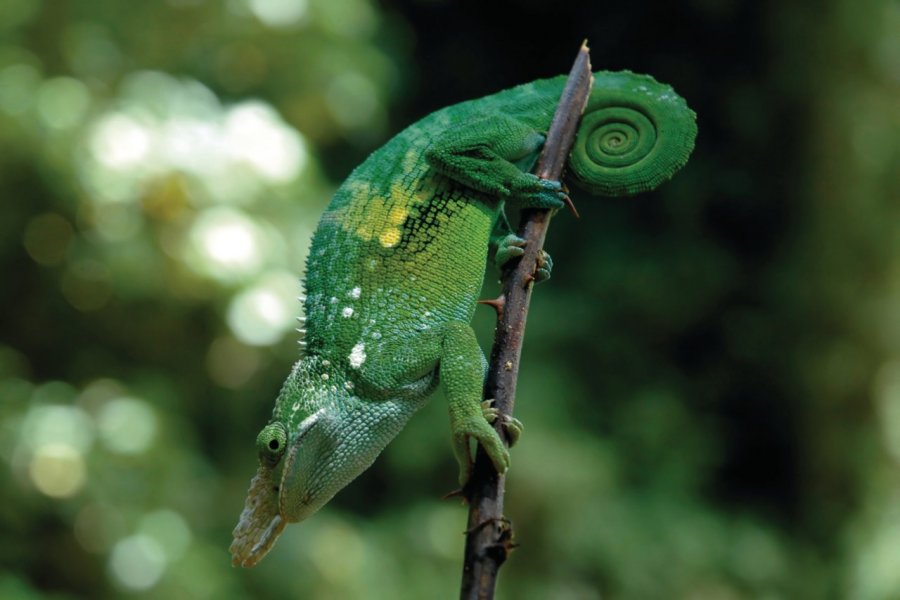Travel Guide Usambara Mountains
Find an accommodation
Advertising
The Usambara Mountains are part of the Pare Nord massif. Some 25 million years old, this is a hundred-kilometer-long massif 50 km from the coast, parallel to the Kenyan border. The forest-covered mountains tower more than 1,200 m above the surrounding plains (the summit is 2,230 m high). With an average temperature of 20°C and heavy rainfall (190 mm per year), the mountains are of great beauty and home to some 50 endemic tree species and a number of animal species (monkeys, eagles, etc.). However, demographic pressure from outward growth, due to the fertility of the land and good rainfall, is rapidly reducing the area of wilderness and leading to significant deforestation. Some 70% of the original forest has already disappeared, resulting in soil destruction and landslides. The region is the focus of numerous rehabilitation projects: reforestation, soil restoration, improved crop varieties, irrigation and health. The local ethnic group is the Wasambaas, who are generally good farmers. All their plots can be seen concentrated at the bottom of the valleys, while near the ridges, a tropical-type forest survives. The best starting point for discovering these bird-rich mountains is undoubtedly Lushoto.On the eastern slope is a 280-hectare botanical reserve (Amani Botanical Gardens), founded by the German East African Company in 1902, where, despite some deterioration, all sorts of fruits and spices still grow (including citrus, mango, anones, pomegranates, carambola, vanilla, ginger, cloves, nutmeg, curry, pepper..), as well as some forty palm species, breadfruit trees, cedars, camphor trees, euphorbias, mimosas, ornamental trees, rubber trees, smilax and many other tropical varieties, not forgetting the African violet (Genus saintpaulia), discovered in 1892 by a German officer and planter, Baron von Saint-Paul.Above Muheza, in Magila, stands a beautiful old mission, founded in 1867 by Anglicans. The church, crowned by a bell tower with a bronze bell, dates from around 1880, and the columned cloister from 1867. The church houses the tomb of the Bishop of Zanzibar, who died in 1924.Sisal plantations. Passing through this region are the immense sisal plantations, which sculpt incredible landscapes of straight rows of plants with mountains in the background. It was a German botanist who brought this aloe-like plant from Louisiana in the late 19th century. Sisal rope is renowned for its strength, much like hemp. Historically, it was used to make ropes for boats and twine for furniture, carpets, bags, etc. Only 2.5% of sisal is used, the rest being recycled as fertilizer. Tanzania is now one of the world's leading sisal exporters, via the port of Tanga, to Asian ports in particular (including the Arabian Peninsula). A small train has been specially built to pass through these plantations, which stretch as far as the eye can see.
Suggested addresses Usambara Mountains
Weather at the moment
Advertising
Organize your trip with our partners Usambara Mountains
Transportation
Book your plane tickets
Car Rental
Boat rental
Accommodation & stays
Find a hotel
Holiday rental
Find your campsite
Tailor-made trip
Immersion travel
Services / On site
Activities & visits
Find a doctor
Find unique Stay Offers with our Partners
Pictures and images Usambara Mountains
Other destinations nearby Usambara Mountains
25 km away




